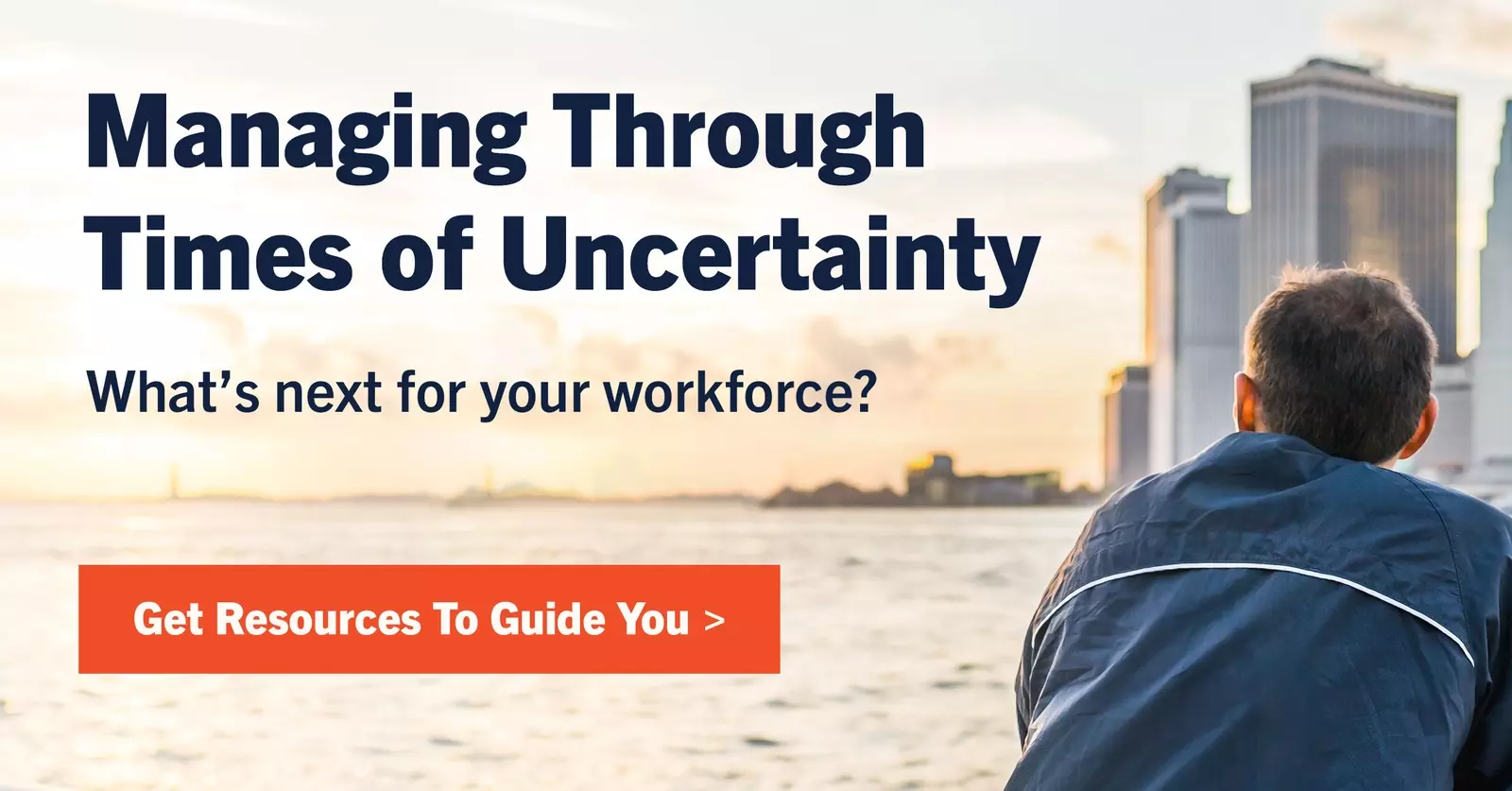I’m writing this in April 2021. It’s been over a year since we went on some degree of lockdown depending on where you are in the world, and our lives have changed forever. You might work for a company, such as mine, where you've been working remotely since March 2020, you may have gone back to a workplace on and off during that period, or maybe like my son you've had to keep on working in person full-time as your role is essential – and you deserve a big heartfelt thank you if that's the case. No matter what the circumstances have been, I’m sure your work environment has changed drastically with new regulations and processes.
Now with the arrival of the various vaccines, however, we're starting to see a light at the end of the tunnel. No matter how dim it might be thanks to the threat of other COVID-19 variants, it's still there, and it signals there will be life after this pandemic. But because of all we've learned and how much things have changed, HR and business leaders have to think carefully about the impacts returning to work will have on their people.

Are we really going back to normal?
So what will the return to work look like? From an employer perspective, companies are taking a long, hard look at the organizational and operational aspects of coming back safely, such as office configuration, whether to require vaccines or not, and other similar considerations. And beyond that, there's the mental impact on their people to take into account as well.
I recently spoke with Eric Hurteau, a work and clinical psychologist in Montreal, and we talked about the psychological aspects of returning to work in a post-COVID-19 world. It turns out there's a lot organizations will need to consider when remote work ends and employees come back to the office.
While some, like myself, are looking forward to going back to the office because we miss seeing our colleagues, getting out of the house, and all the other wonderful things that go with in-person interaction, some might not be so keen on that prospect. For instance, I wouldn’t be honest if I said I’m looking forward to being stuck in traffic, spending 2 hours of my life a day in my car every day, rushing in the morning and at night, and coming home late and having to think of supper. And my kids are grown – imagine that same scenario with children that you must drop off, pick-up, etc. taking an even larger chunk of the time that was freed up by working from home.
There are other things that are psychologically difficult too, such as not seeing my dogs or being able to take puppy or kitten breaks during the day, taking them for walks at lunch, and just spending time with them. The point is that for different people it’ll be different things, but all these reasons for discomfort when returning to work will need to be considered if work/life balance is an objective.
We will all need to come up with different solutions to these issues rather than simply going back to the way things were, so what areas do we need to look at to do that effectively?
Employees will expect flexibility
For hourly employees, one avenue to consider is offering more flexibility through your scheduling processes for your employees’ time, such as different shift types instead of the traditional 8 hours a day, 5 days a week. Some initial reactions might be “it can’t be done,” “we’ve always worked that way," and other similar answers. But if the last year has proven anything, it's that companies are absolutely able to adapt very quickly to new circumstances when the need arises.
Offering flexible schedules could be a differentiator when recruiting talent. Wouldn’t that be a game changer for your company especially with the challenges COVID-19 has brought to the job market? It's a simple concept with a great impact. Being able to swap shifts with colleagues as easily as swiping a few times on your mobile device would be a great way to attract new employees and retain skilled team members who may now be looking at new options as the pandemic begins to lift. You can provide workers with convenient self-service capabilities from any device or location, enable employees to identify shift preferences and availability, and so many more modern solutions with the right HR technology.
Choose engaging work options to maximize productivity
The independence the flexible scheduling options just discussed would provide your people, and the accompanying feeling of participating in the well-being of the company, will make them happier, which in turn increases productivity. It sounds simple enough, but it will require openness from executives to achieve this. People are reluctant to change, even when it’s for their own good, but we need to grab this opportunity with both hands and capitalize on what we've learned from remote work and other non-traditional work scenarios to be successful in the future.
An example of this for salaried office employees would be offering a hybrid model option of 2 days home and 3 days at the office or whatever combination works for your company. This helps promote a better work/life balance, helps people make the transition from full-time remote work back to time spent in the office, reduces time spent commuting, and reduces money spent on gas, new office clothes, and other similar expenses. It also supports more introverted employees who need more time away from an office environment. Together, all this combines to reduce the stress of the return to work.
This is another area you can support easily with the right HR technology. Automating communication around who's supposed to come in when, putting your new policies out on an easy-access company portal that's in the same place employees go to complete time, HR, and payroll tasks, and gathering feedback actively as you implement your new policies are all great ways to help manage your organization's transition out of the pandemic.
Change management is essential
The last major item to consider is the anxiety that's already being felt by employees and that will increase as things change and we change the way we're working. It’ll take time for people to feel comfortable with their surroundings and until then, the anxiety is natural. They might not even realize that it’s there, especially mixed in with all other emotions over the last year, but it is and it’s affecting everyone.
It might be a good idea, as an example, to ensure that your company benefits can provide support to your employees, such as through an employee assistance program, and more importantly, that this information is communicated clearly to everyone so people know they have access to resources. We need to rethink the kinds of benefits we're offering to reflect the changes in priorities COVID-19 has brought about in the workforce.
Conclusion: It's time for organizations to reinvent themselves
These are just some of the items I discussed with Mr. Hurteau, but it's by no means an exhaustive list. I’m sure there are many more items that need to be considered, and they'll really depend on each person who works at your organization. Not taking your employees’ concerns into consideration could mean they might seek employment elsewhere leaving you to go through the process of recruiting, training, onboarding, and managing new team members along with all the time and costs associated with those activities.
We have possibly a once in a lifetime opportunity right now where we can re-imagine and redesign the status quo of how we work. There are so many ways to make work better and these options can be mutually beneficial for the employee and the employer. Let’s take advantage of this time to transform the workplace into something that works for everyone! If you'd like to see more about why the time to reset is now, check out our recent Great Reset Research Report with HCI and discover all the possibilities you have to make real change as we begin defining what normal will look like in the days ahead.



